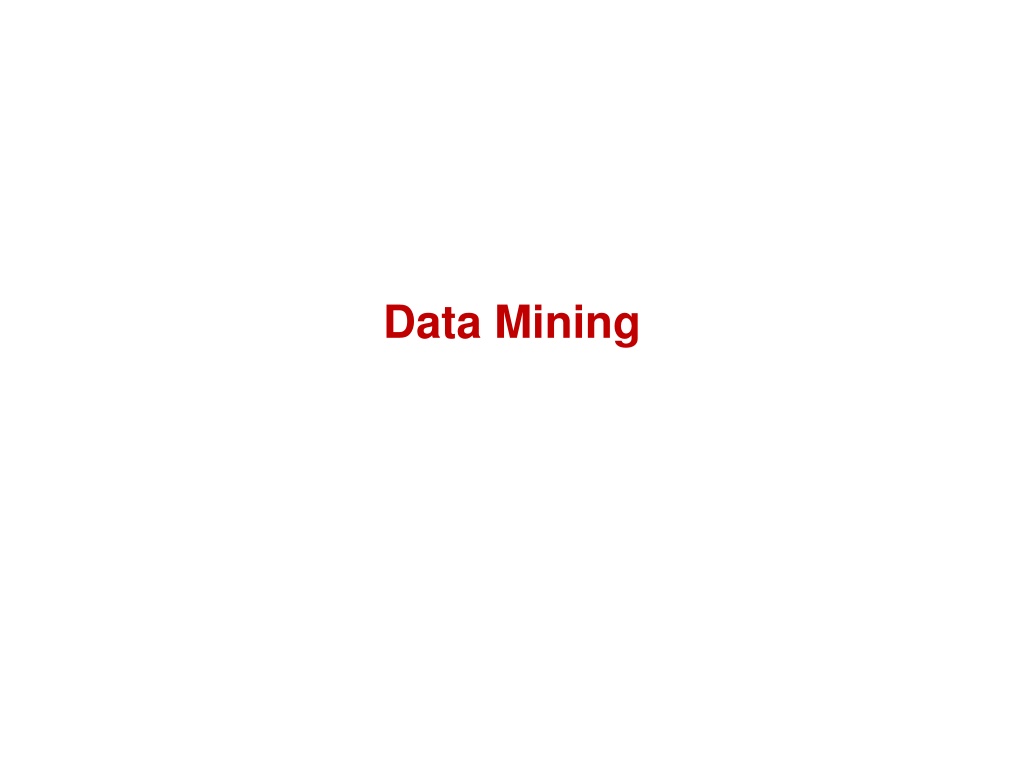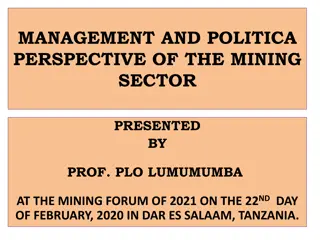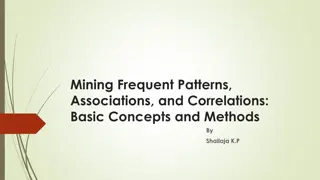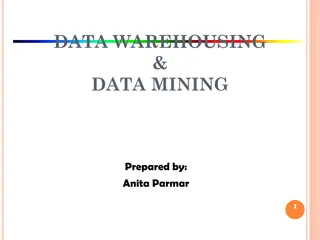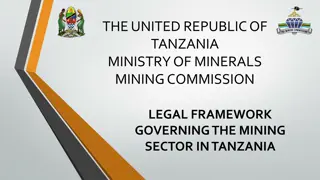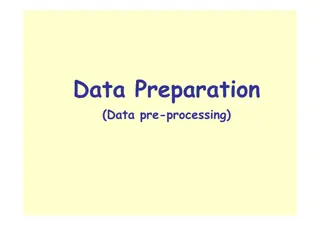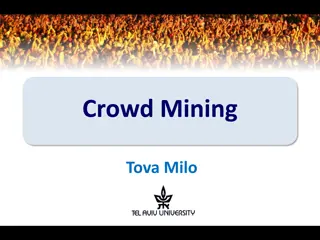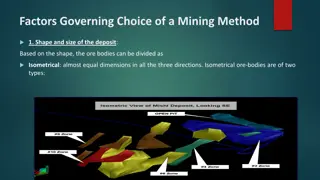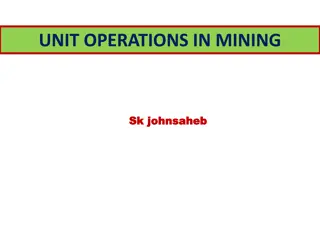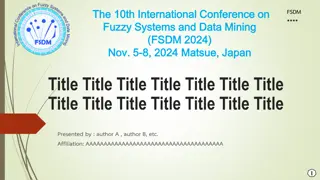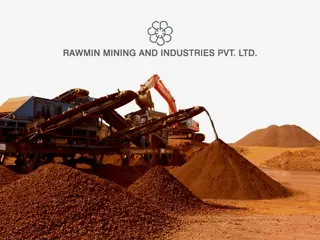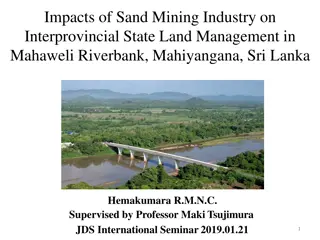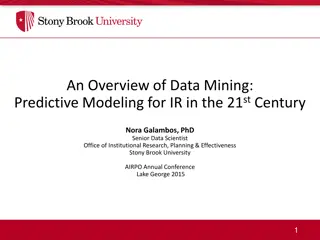Data Mining
Data mining is the process of discovering patterns and knowledge from vast data sources such as databases, data warehouses, the web, and more. It involves knowledge discovery and iterative sequences, enabling automated analysis of massive datasets to extract valuable insights. The explosive growth of data presents challenges in understanding and analyzing information effectively. Steps like data cleaning, integration, selection, transformation, and mining are crucial for pattern evaluation and knowledge presentation.
Uploaded on Feb 19, 2025 | 0 Views
Download Presentation

Please find below an Image/Link to download the presentation.
The content on the website is provided AS IS for your information and personal use only. It may not be sold, licensed, or shared on other websites without obtaining consent from the author. Download presentation by click this link. If you encounter any issues during the download, it is possible that the publisher has removed the file from their server.
E N D
Presentation Transcript
Data mining is the process of discovering interesting patterns and knowledge from large amounts of data. The data sources can include databases, data warehouses, the Web, other information repositories, or data that are streamed into the system dynamically.
Data mining also said to be knowledge mining form data or knowledge discovery from data The knowledge discovery process involves an iterative sequence
The Explosive Growth of Data From terabytes (10004to yottabyteds (10008) Science Bioinformatics Scientific stimulation Medical research With the rise of high-throughput (HTP) technologies in particularly in molecular amount of collected data has grown in an exponential fashion the life sciences, biology, the
Data rich but information poor What does those data mean? How to analysis data? Data mining Automated analysis of massive data sets
1. Data cleaning (to remove noise and inconsistent data) 2. Data integration (where multiple data sources may be combined) 3. Data selection (where data relevant to the analysis task are retrieved from the database)
4. Data transformation (where data are transformed and consolidated into forms appropriate for mining summary or aggregation operations) by performing 5. Data mining (an essential process where intelligent methods are applied to extract data patterns)
6. Pattern evaluation (to identify the truly interesting patterns representing knowledge based) 7. Knowledge presentation (where visualization and knowledge representation techniques are used knowledge to users) to present mined
Steps 1 through 4 are different forms of data pre-processing, where data are prepared for mining The data mining step may interact with the user or a knowledge base The interesting patterns are presented to the user and may be stored as new knowledge in the knowledge base.
